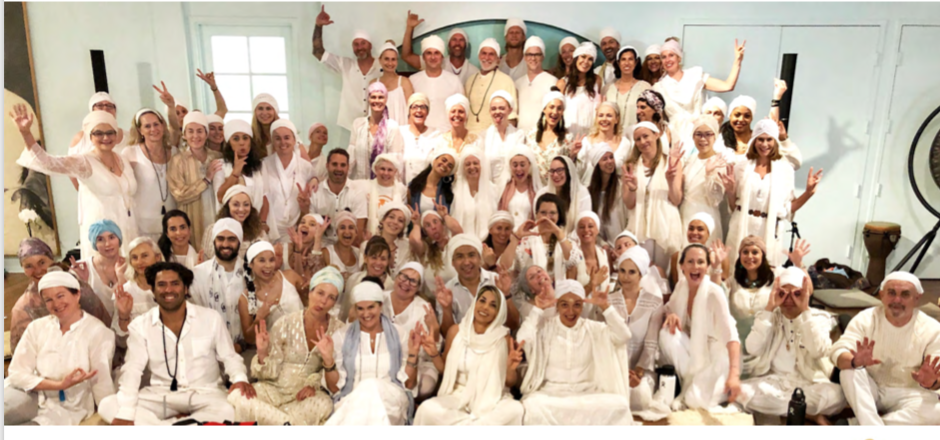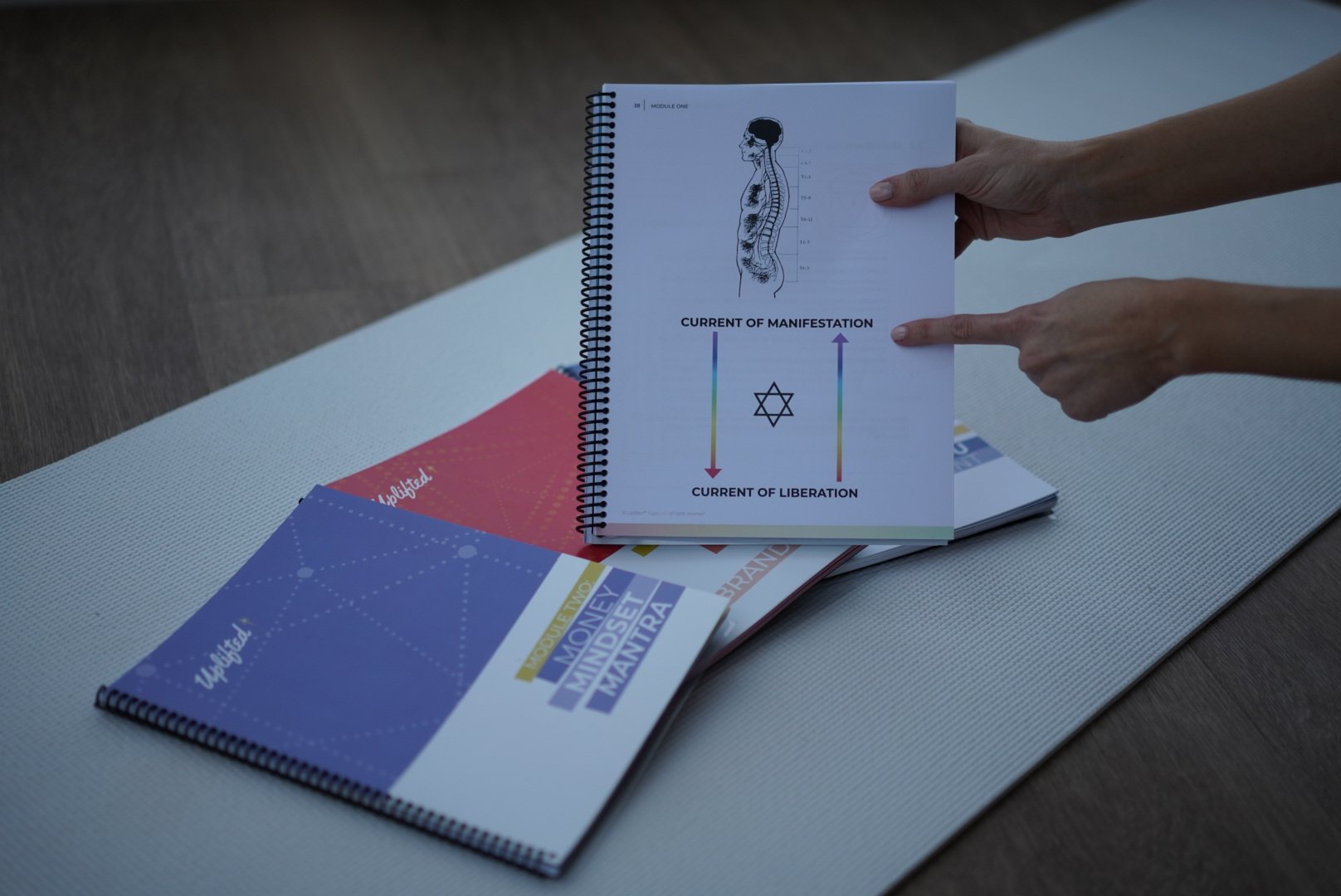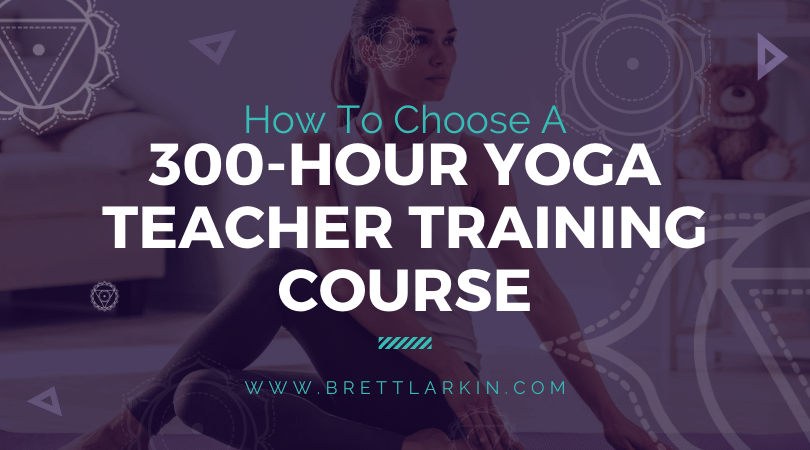It took me SUCH a long time to find and choose my advanced yoga teacher training program. I had already been practicing yoga, pranayama, and meditation for a while, as well as teaching yoga both online and in person. So by the time I got around to shopping for a 300 hour yoga teacher course, I knew exactly what I wanted.
Even so, the choices for a quality 300 hour program that I could trust felt impossibly limited.
Not that there aren’t good 300 hour teacher training courses out there, there totally are! But not many of them felt exactly right. I couldn’t quite place my finger on it but I knew that I didn’t want to spend thousands of dollars on advanced teacher training if it didn’t feel right.
I eventually did find a 300 hour program that I liked and was relieved to feel that I had gotten my money’s worth!
But I remember all too well the stress of searching for a lead yoga instructor I resonated with and a yoga teacher training program that I felt could benefit my yoga career.
So to help others out in their own quest to find the perfect advanced training program, I’ve made a list of things to look out for before you book your 300 hour teacher training.
Why Enroll In A 300 Hour Teacher Training
Making the decision to enroll in an advanced 300/500 hour yoga teacher training program is a powerful way to enhance your yogic knowledge, refine your teaching skill, further deepen your personal practice, and grow your yoga business.
That’s why a 300 hour advanced yoga teacher training is a truly life-changing experience.
Typically, a yoga practitioner will choose a 300 hour yoga teacher training to
- deepen their yoga practice
- develop their teaching method
- become accredited to become a lead teacher on 200 hour courses
- deepen their knowledge in a specific area, such as Ayurveda, prenatal yoga, Vinyasa yoga, etc
Where a 200 hour training focuses on the basics of yoga, like yoga philosophy, meditation, pranayama, yoga anatomy, teaching methodology, and yoga poses, a 300 hour yoga teacher course focuses on all of those things from a very specific lense.
Like if you were super into the yogic philosophy from your 200 hour training, then you can choose an advanced training that does a deep dive on traditional yoga as taught by the Yoga Sutra.
If you were really into the alignment of the yoga poses taught in the style of Vinyasa yoga, then you’d love an advanced training that teaches advanced asana and yoga sequencing.

In my case, I was really interested in Kundalini, subtle energy work, and the chakras. So my advanced yoga teacher training focused a lot on that, helping me both as a yoga practitioner and as a yoga teacher trainer today.
The other major advantage of having an advanced yoga certification is that it can really help you develop professionally. Being a dedicated yoga practitioner, after all, isn’t necessarily all it takes to run a yoga studio or lead a yoga retreat.
So finding an advanced course to teach you the business of yoga is super valuable too.
How to Choose a 300 Hour Program
Making the decision to enroll in an advanced 300/500 hour yoga teacher training program is a powerful way to enhance your yogic knowledge, refine your teaching, further deepen your personal practice, and grow your yoga business.
Investing your time and money in an advanced 300/500 hour program is a big commitment. Finding a program that is in line with your purpose, intentions, and has value that extends beyond the training is of utmost importance to many experienced yoga teachers.
With so much of the yoga industry no longer being able to offer in-person YTT during this time, many programs have gone online and choosing the right one can feel like a daunting task.
Whether you want to train online now or attend a local, in-person or destination training in the future, there are some things to consider to help guide you toward the training that is right for you.
1. Set your Intention For Your Yoga Certification
Having a clear intention of what you want to get out of your advanced training is important. There are many programs that offer a very specific focus (style, lineage or niche) and others that offer a broader curriculum. If you have a specific goal or outcome in mind post graduation, choosing the program that is inline with your intentions is paramount.
Some helpful questions to ask yourself as you set intentions are:
- Are you looking to deepen your personal practice, refine your teaching or wanting to jump start your online yoga or wellness business?
- Do you want to work as a teacher trainer or run your own training program?
- Is Yoga Alliance (YA) approval important to you?
Helpful Resources
- Levels of Yoga Certification: What The Heck Is The Difference Between 200-, 300-, and 500-Hour YTT Courses?
- Should You Quit Your Job To Teach Yoga? Probably Not
2. Identify Which Aspects Of An Advanced Training Are Important To You
Some of you may simply be looking to advance your yoga education and enhance your teaching, either in-person or online. However, many students who enroll in 300/500 hour YTTs aspire to someday run their own yoga teacher training as a lead teacher.
Whether you plan to work as a teacher trainer or run your own online or in-person training, choosing an advanced YTT that includes business modules and live business training is important.

This brings me back to the question I posed earlier, is Yoga Alliance approval important to you? If you plan to work for a training program that is registered with YA, you may be required (if not now, in the future) to hold the designation of E-RYT. If this designation is important to you or you already pay dues to Yoga Alliance, choosing an online yoga school that is Yoga Alliance Approved should be an important consideration.
Yoga Alliance currently has a remote learning provision, but not all online 300/500 Hour YTT’s are approved under this provision. Be sure to inquire whether or not the online school you are interested in has been granted approval under this provision.
Helpful Resources
- Can I Teach Without a Yoga Alliance Certification? (Yup)
- What is Yoga Alliance and Do I Need an RYT Certificate to Teach Yoga?
3. Consider Either In-Person or Online Training
For many of us right now, this is no longer a choice. Unless you are waiting until a local studio reopens or plan to enroll in a destination program, if you want to complete your advanced teacher training now, you will most likely need to choose an online program.
When looking at online courses, consider mentorship vs. self-study. Most online courses have some aspect of self-study, but not all include live, interactive lectures and mentorship.

If you decide to go the online route, then here are a few key characteristics to look out for as you choose your program:
- a course that combines live, in-depth training with self-study
- live support and assistance throughout the training
- a section on how to take your offerings online so that you can have a global presence beyond your local yoga studio
- one-on-one mentorship opportunities
- past experience with online training as these kinds of programs will have a smoother and richer experience than the newer programs that simply popped up online in response to COVID-19
- lots of positive reviews from graduates of the course
- modules that outline how to start your online business is also an important consideration
If you prefer to do your entire course self-study with no live support, there are definitely options for that format; however, they most likely will not be YA approved.
Helpful Resources
- Is An Online Yoga Teacher Training Worth The Investment?
- How to Choose a Yoga Teacher Training (That Won’t Rip You Off)
4. Get Clear About Yoga Teacher Training Costs
With so many trainings shifting to online, you will likely see a huge variation in pricing when looking at 300/500 Hour Yoga Teacher Trainings.
Many programs have been thrown together quickly to try to adapt to remote learning. These programs do not feel interactive nor have the quality of courses that have been running online for several years.

It’s important to consider that you get what you pay for. More in-depth, interactive programs with world-renowned experts and content you keep forever will be more expensive than courses with limited interaction, content that expires, and one lead trainer.
Be certain you are clear about what is included and the value you are getting.
Helpful Resources
5. Read Testimonials, Attend Informational Sessions, Talk to Alumni
Research the top-rated 300/500 YTTs and request information on their courses, such as a program syllabus or brochure. Read reviews, request testimonials and inquire about informational sessions or past students you could connect with to learn about their personal experiences.

Remember to stay true to your intentions, finding the training that is most inline with your goals. Knowing exactly what a program offers and training entails will help you make your best, most informed decision.
Helpful Resources
- Advanced Yoga Teacher Training: Is a 300 HR YTT Worth It?
- How To Know If An Online YTT Is Legit: 8 Things To Look For
6. Trust Your Direct Experience
If you loved your 200 hour YTT experience, ask if they offer advanced teacher trainings.
If their 300/500 advanced teacher training program offers a curriculum that meets all of your expectations, trust your own direct experience and continue training with the teacher and program you love.
On the other hand, if your initial YTT experience was not what you expected or as in-depth at you had hoped, looking elsewhere for your 300/500 advanced training may be a better option.
If that’s the case, pay close attention to your experience with each school that you are considering as an option for your advanced yoga certification.
Consider these factors as you do your research:
- What is the general experience when you interact with the yoga school, its website, its teachers, and the lead teacher?
- Is the yoga school generally friendly and open to questions?
- What is the sense that you get when you review the course curriculum?
- Do you like the way this yoga school teaches yoga, in general? Would you want to learn how to teach yoga or run a business from them?
Recommended Reading: How to Upgrade Your Yoga Alliance Certification Designation to 300 / 500 RYT
Final Thoughts
To practice yoga means that you will always be a student. Continuing education opportunities are perfect for one-off experiences that are hyper-focused on things like your asana practice, yogic philosophy, yoga sequencing, or mindfulness meditation (for example.
But a full 300 hour yoga teacher training will hopefully cover all of that…
…and more.
And though the core curriculum for an advanced training is generally the same (yoga philosophy, yoga anatomy, teaching method, meditation, pranayama, asana practice, etc), that doesn’t mean that any program will teach you what you’d like to learn.
Take the time to investigate and you will be glad you did.
Experience 3 Training Videos from Inside My 200-Hour Online YTT

YOU MIGHT ALSO LIKE
- What is Yoga Alliance and Do I Need an RYT Certificate to Teach Yoga?
- 200 Hour Yoga Teacher Training: What To Expect, How To Prepare, Where To Do It
- Is An Online Yoga Teacher Training Worth The Investment?
- Levels of Yoga Certification: What’s The Difference Between 200-, 300-, and 500-Hour YTT Courses?yoga certification
- What Does A 500 HR Yoga Teacher Training Course Cover? Standards and Benefits
- A Guide to The Best Yin Yoga Teacher Training Programs
- Hatha Yoga Teacher Training Certification: Immersion, Online, or in Studio?
- Wanna Teach Kids Yoga? Find A Fun Childrens Yoga Teacher Training!
- Ashtanga Yoga Teacher Certification: Where And How To Get It
- How To Know If An Online YTT Is Legit: 8 Things To Look For
- Want to Become a Certified Vinyasa Yoga Teacher? Read This.
- How to Choose a Yoga Teacher Training (That Won’t Rip You Off)









